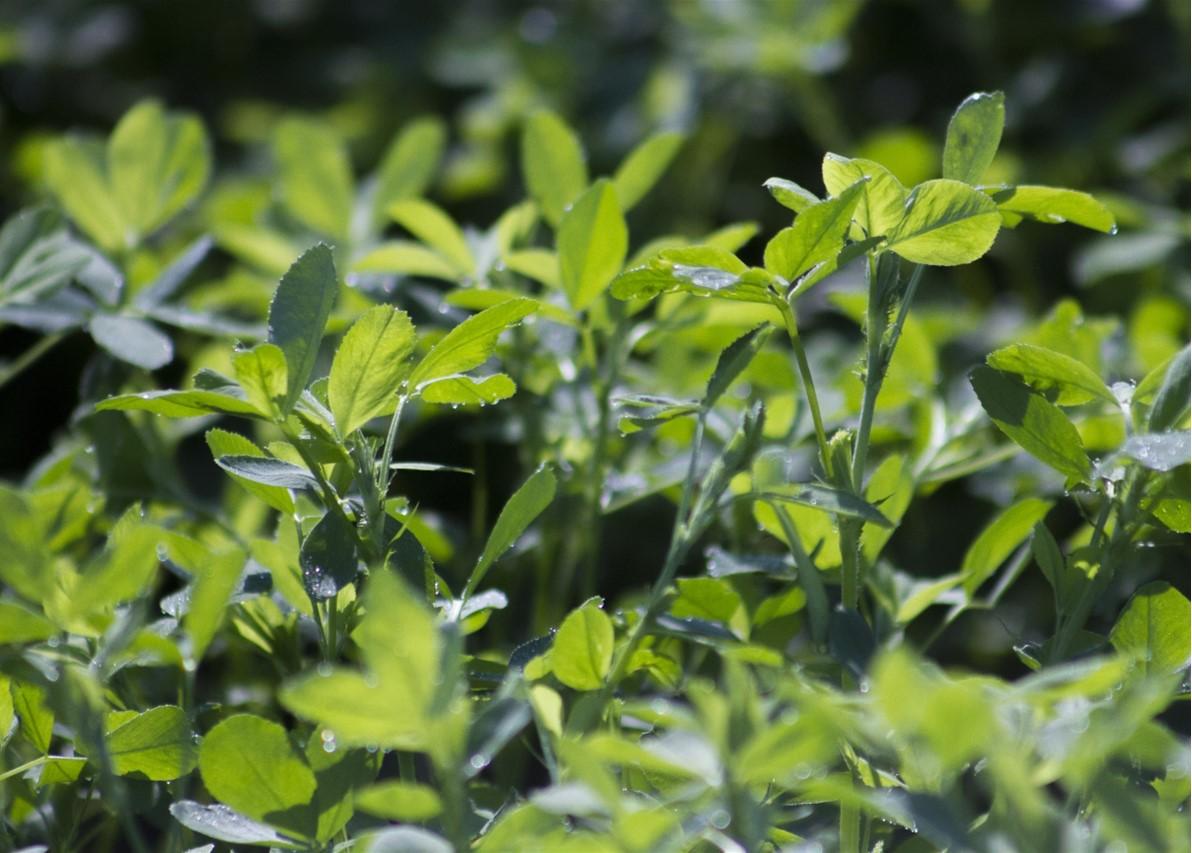Strengthening the stand
Interseeding other forage species into a marginal alfalfa stand is a strategy that has been done with regularity for many years. As most alfalfa growers know, autotoxicity makes it nearly impossible to seed alfalfa back into alfalfa successfully.
When considering interseeding options, you must decide if you want fast or permanent forage. In the latter case, a cool-season grass such as orchardgrass or novel endophyte tall fescue works well. Of course, additional forage yield won’t be realized until later in the growing season.
Perennial forage is the right choice for younger alfalfa stands where you want to extend the life of a currently marginal alfalfa stand. Some producers do this regularly after two or three years, even when alfalfa winterkill isn’t an issue. Another biennial option is to use red clover, but realize it is slow to dry if you plan to bale dry hay.
For fast forage that is high quality, annual or Italian ryegrass is pretty hard to beat. It is easily interseeded and grows rapidly. As a one-year fix, Italian ryegrass checks all the boxes as long as adequate precipitation is received throughout the summer.
Another option to consider is to interseed oats early and follow it with warm-season annuals such as sudangrass or millet after first cutting. Once established, these annuals can be cut on an alfalfa schedule. They complement alfalfa well, bringing an energy component to the protein in the alfalfa.
Continually monitor alfalfa growth
As the season progresses, you will need to consider what is next for the stand. If the stand is still worth a little kick in the pants, no-till a winter cereal such as rye or triticale after the early fall harvest. Then chop it next spring and follow with corn to take advantage of the residual nitrogen from the alfalfa stand.
If forage is short, another option is to plant forage oats into the stand in late summer for a late fall harvest. If you want to double down plant spring oats with triticale, you will have both a late fall and spring forage harvest. You will need to rotate out of the exhausted stand with corn or a sorghum species by this time.
The right thing to do varies with each year and each farm situation. The problem is that the best choice is almost always dependent on future weather conditions that can never be predicted at the time of the decision.
This article appears in the Maryland Milk Moo's March 2021 (Volume 2, Issue 1) and the Agronomy News April 2021 (Volume 12, Issue 1) newsletters.
Maryland Milk Moo's, March 2021, Vol.2, Issue 1
Maryland Milk Moos is a quarterly newsletter published by the University of Maryland Extension that focuses on dairy topics related to Nutrition and Production, Herd Management, and Forage Production. To subscribe to this newsletter, click the button below to enter your contact information.
Subscribe
Agronomy News, April 2021, Vol. 12, Issue 1
Agronomy News is a statewide newsletter for farmers, consultants, researchers, and educators interested in grain and row crop forage production systems. This newsletter is published once a month during the growing season and will include topics pertinent to agronomic crop production. Subscribers will receive an email with the latest edition.
Subscribe
